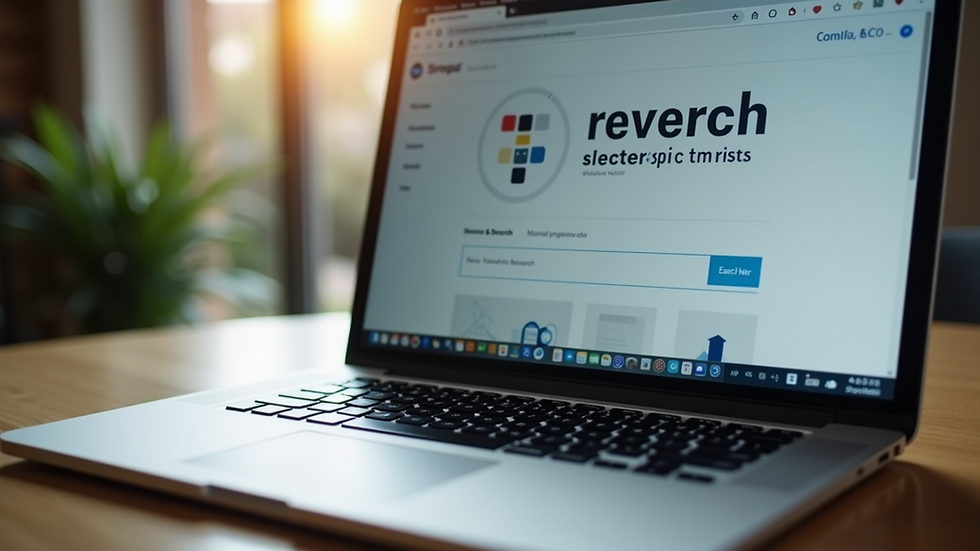The Role of AI in Enhancing Creative Design Processes
- Diego Garzon
- Oct 20
- 4 min read
The intersection of artificial intelligence (AI) and creative design processes is a rapidly evolving area that has the potential to revolutionize the industry. As designers face increasing demands for innovation and efficiency, AI tools provide powerful solutions to enhance creativity, streamline workflows, and deliver compelling outcomes. This blog post explores how AI is transforming creative design, from concept generation to final execution, while also offering practical insights for designers looking to integrate these technologies into their practices.
AI Design: The New Creative Companion
AI design tools are not just for tech-savvy professionals; they are accessible to anyone with a creative mind. These tools can assist in various phases of the design process, including brainstorming, planning, and execution. For example, AI-generated mood boards can quickly consolidate design ideas based on a set of parameters, saving hours of work.

The capabilities of AI can also lead to unexpected innovations. For instance, generative design software allows designers to input specific parameters—such as materials, manufacturing methods, and performance requirements—and then generates numerous design alternatives. This approach not only saves time but often results in unique solutions that may not have been conceived through traditional methods.
Furthermore, AI tools like Adobe Sensei, Canva, and RunwayML are becoming mainstream, equipped with features that help automate mundane tasks such as resizing images, selecting color palettes, or even suggesting typography. This automation enables designers to focus more on the conceptual and creative aspects of their work, allowing their human creativity to shine through.
The Benefits of AI in Design Workflow
Integrating AI into design workflows yields numerous benefits. One of the primary advantages is enhanced efficiency. By automating repetitive tasks, designers can devote their time to more complex and rewarding aspects of their projects. For instance, AI can analyze existing design elements and recommend the most suitable colors or styles.
Statistical evidence suggests that the use of AI can increase productivity by up to 40 percent. A recent survey of design professionals revealed that over 60 percent of respondents reported a significant reduction in the time spent on repetitive tasks due to AI tools. This efficiency not only speeds up the design process but also improves overall satisfaction among team members.
Furthermore, AI can offer insights into user behavior and preferences through data analysis. By evaluating user interaction with designs, AI tools can facilitate a data-driven approach to design, ensuring that the end product resonates with the target audience. Designers can use these insights to make informed decisions and adjustments along the way, dramatically improving the project's success rate.

AI in Collaborative Design Environments
Collaboration is at the heart of creative design. Teams often comprise individuals with diverse skill sets and perspectives. AI can enhance this collaboration by providing a common platform where team members can share ideas and revisions seamlessly.
AI-driven platforms such as Miro and Figma allow teams to collaborate in real time, streamlining the design process. These tools come equipped with features that facilitate communication, making it easier for designers, developers, and stakeholders to stay aligned throughout a project's lifecycle.
Moreover, machine learning algorithms can analyze past collaboration data to suggest optimal workflows tailored to each team's unique dynamics. For instance, if a particular design team tends to work faster when using specific templates or frameworks, the AI can recommend those as starting points for future projects. By optimizing collaboration, AI enhances creativity and fosters innovative solutions.

AI-Driven Personalization
Personalization has become a crucial aspect of design, especially in marketing and product design. Consumers today expect tailored experiences, which can be challenging to achieve manually across large audiences. AI simplifies this process by quickly analyzing vast amounts of data to deliver personalized design suggestions.
For example, companies can use AI-driven analytics tools to monitor user interactions on websites and applications. Based on this data, designers can customize layouts, color schemes, and content to match user preferences and behaviors. This level of personalization not only enhances customer satisfaction but also boosts conversion rates, making products more appealing to individual users.
Additionally, AI can help predict future design trends based on real-time data analysis. Tools like PredictHQ aggregate data from various sources, enabling designers to stay ahead of the curve by anticipating shifts in consumer preferences. By leveraging these insights, designers can create modern and relevant designs that resonate with their audience.
A Future of AI and Human-Centered Design
While AI plays a significant role in enhancing creative design processes, it is essential to remember that it is a tool—a powerful one at that, but a tool nonetheless. The goal should be to use AI to complement human creativity rather than replace it. Designers should approach AI as a partner that enriches their capabilities and helps them overcome challenges.
As we look toward the future, the integration of AI in human-centered design emphasizes empathy and understanding of user needs. By combining AI's analytical strengths with human creativity and empathy, designers can create solutions that are not only visually appealing but also deeply resonate with users on an emotional level.
To facilitate this, designers can seek out design solutions that use AI to enhance their work, keeping user experience in focus. By focusing on the human element and leveraging AI's strengths, designers can navigate the complexities of the creative landscape effectively.
In summary, the role of AI in enhancing creative design processes is expansive and filled with potential. By embracing AI as a valuable partner in creativity, designers can improve their workflows, foster collaboration, and deliver personalized experiences that engage and delight their audiences. The future of design is bright, and with AI, the possibilities are endless.




Comments